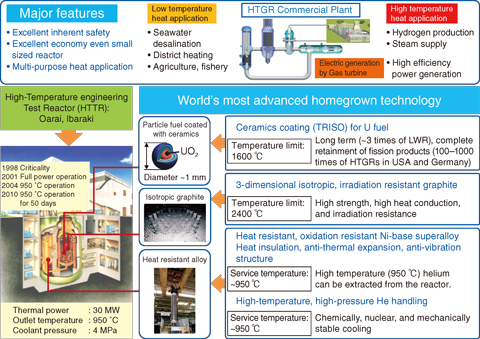
Fig.6-1 Outline of HTGR; features, heat utilization, major specifications, and technologies of HTTR
To remedy the fragility of our country’s energy supply-demand structure arising from excessive dependence on fossil fuel resources from abroad whilst simultaneously reducing greenhouse gas emissions, it is effective to use nuclear energy not only for power generation but also for various heat applications. The Strategic Energy Plan, Large-boned Policy, and Japan Revitalization Strategy, decided by the cabinet in 2014, list the promotion of research and development of a high-temperature gas-cooled reactor (HTGR) as a national policy because such reactors have the excellent inherent safety and meet the energy demand for various industries. Reflecting on the social situation, the HTGR conference has been developing a strategy to commercialize the HTGR.
An HTGR can supply heat at a temperature of 950 ℃ using inert helium (He) gas as a coolant. Three other cutting-edge Japanese technologies that make it feasible to obtain such high temperatures in HTGR have been developed in JAEA as follows: (1) a fabrication technology for ceramic-coated fuel particles to contain radioactive fission products within the bodies of the particles; (2) a fabrication technology for isotropic and irradiation-resistant graphite blocks; and (3) a manufacturing technology for heat- and oxidation-resistant super-alloy. Using these major technologies, as well as knowledge of high-temperature structural design and the like, we generated a temperature of 950 ℃ from the High-Temperature engineering Test Reactor (HTTR) in 2004 for the first time in the world, and demonstrated a stable supply of heat from this reactor over a 50-day operation at 950 ℃ in 2010 (Fig.6-1).
It is feasible to prevent accidental overheating and oxidation of fuel-coating layers and explosive gas generation by physical phenomena without any engineered safety features. The inherent safety ensures no harmful release of radionuclides to general public and environment in any accident.
A fuel with a burnup targeted at 160 GWd/t has been developed to increase economy and reduce waste by HTGR (Topic 6-1). Furthermore, fuel using 93%-enriched uranium (U) has been researched to reduce the potential radiotoxicity of the spent fuel (Topic 6-2). As for the hydrogen production and heat application technology, chemical reactors made of industrial materials for Iodine-Sulfur (IS) process to produce hydrogen by water-splitting have been developed (Topic 6-3), and a design study has been performed to develop a sea water desalination system utilizing waste from a He gas turbine system (Topic 6-4). The safety-evaluation technology has been developed using HTTR to connect heat application systems manufactured by general industry standards to HTGR (Topic 6-5). We are preparing to resume operation of HTTR, which has been stopped since the Great East Japan Earthquake.